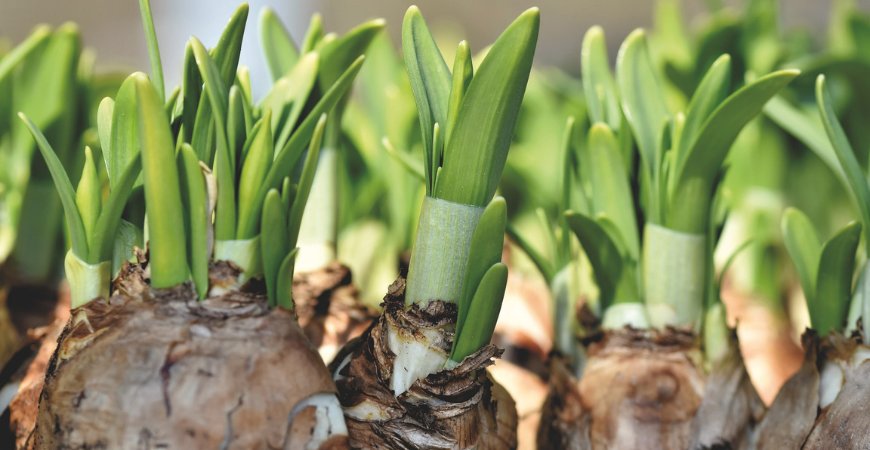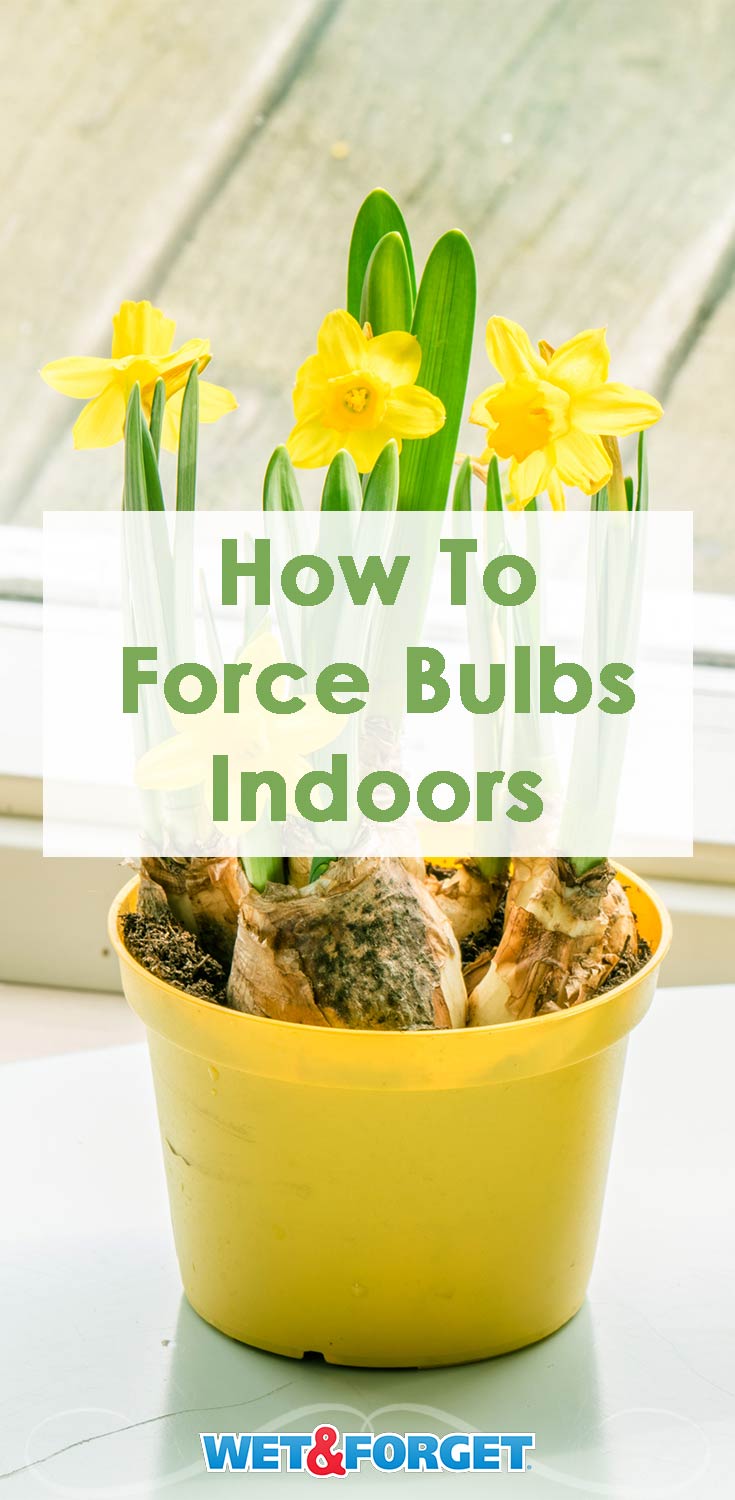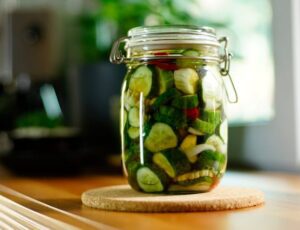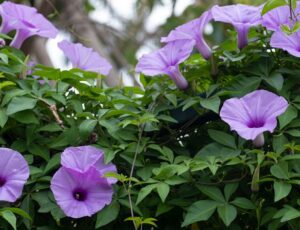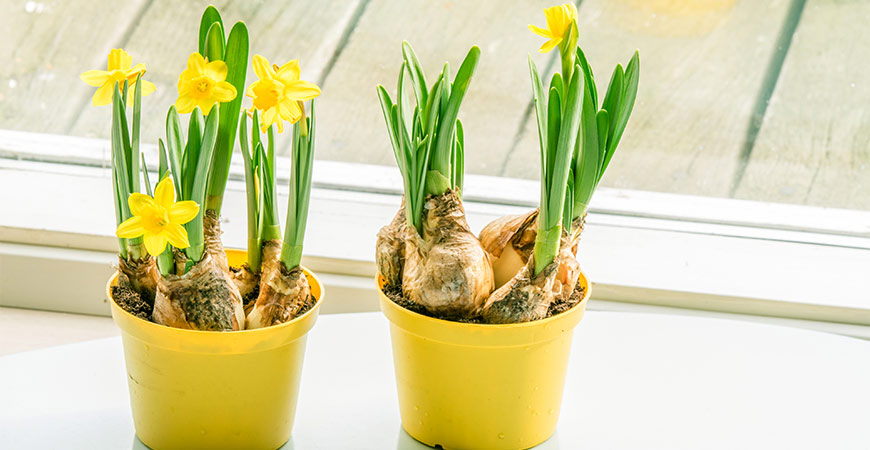
Forcing Bulbs Indoors for Wintertime Enjoyment
Late winter finds many home gardeners wishing for the beauty of spring flowers. Coaxing flowering bulbs into early bloom is referred to as “forcing.”
Here are the how-tos of forcing bulbs indoors. Soon, you’ll enjoy bright, fragrant flowers on your kitchen windowsill.
What types of bulbs are easy to force and grow?
Paper-white narcissus and amaryllis are two of the easiest bulbs to force because they require no chilling time. They also bloom quickly. Other easy-to-grow bulbs include crocus, hyacinths, muscari, and mini-daffodils.
Can I force daffodils and tulips?
Standard daffodils and tulips can also be forced but require additional care. Shorter-growing tulip varieties such as tulipa humilis are the easiest to force indoors.
What type of potting soil is best for forcing bulbs?
It’s best to use a soilless potting mix because it holds in moisture well but is also light enough to allow excess water to drain from the container.
What type of container is best to use when forcing bulbs?
It’s best to use a weighted ceramic or terra cotta pot, especially for taller-growing plants such as daffodils or tulips. The flowers can be heavy and may tip over a lightweight plastic pot.
Write the bulb type and the date you start the chilling process on a plant label. Insert the label into the potting soil.
Do I need to chill the bulbs?
It depends on the type of flowering plant. Winter-hardy flowering bulbs native to southern locales, such as amaryllis and paperwhite narcissus, do not require chilling.
Crocus, daffodils, dutch iris, hyacinths, scilla, and tulip bulbs require a period of chilling.
While chilling, the weeks of cool temperatures trigger a biochemical response. The bulb “turns on” and begins to develop a flower inside.
Floweringflowering bulbs require 16 to 18 weeks of cool temperatures for healthy blooms. Don’t be tempted to shorten the chilling time as the flowers will emerge deformed, and plant growth will be limited.
How do I chill the bulbs?
Finding the right indoor location to chill bulbs can be challenging because they require a consistent temperature between 35 to 45 degrees F for 16 to 18 weeks. If outdoor winter temperatures stay above 25 degrees, you can stash potted bulbs in the garden.
Cover them with a thick layer of fallen leaves or straw. If your outdoor winter temperatures routinely fall below 25 degrees, store potted bulbs in an unheated garage, unheated basement, or a cold frame. Routinely water the bulbs to keep the soil evenly moist but not soggy.
Recommended length of chilling time (in weeks) by bulb species:
- Crocus: 15
- Hyacinths 11 to 14
- Tulips: 14 to 20
- Daffodils (Narcissus): 15 to 17
- Glory-of-the-snow: 15
- Common snowdrop: 15
- Grape hyacinth: 14 to 15
- Scilla: 12 to 15
- Dutch iris: 8 to 12
What do I do when the bulbs have finished chilling?
Once the dormancy period is over, you’ll need to gradually ‘wake up’ the bulbs.
- Place the pot in a cool room at approximately 60 degrees F. Set the pot in indirect light for two weeks.
- When new shoots appear and reach 3 to 5 inches in height, move the container to a sunny window in a room around 68 degrees.
- When the flower buds begin to show color, move the container to bright, indirect light again to encourage blooming.
- Allow an additional 3 to 4 weeks to bloom time.
How long will the bulbs take to bloom after chilling?
Again, this depends on the flowering plant. Generally, if you prefer to enjoy flowers during the winter in January, you should pot bulbs in September or October. For February flowers, plant bulbs in mid-October.
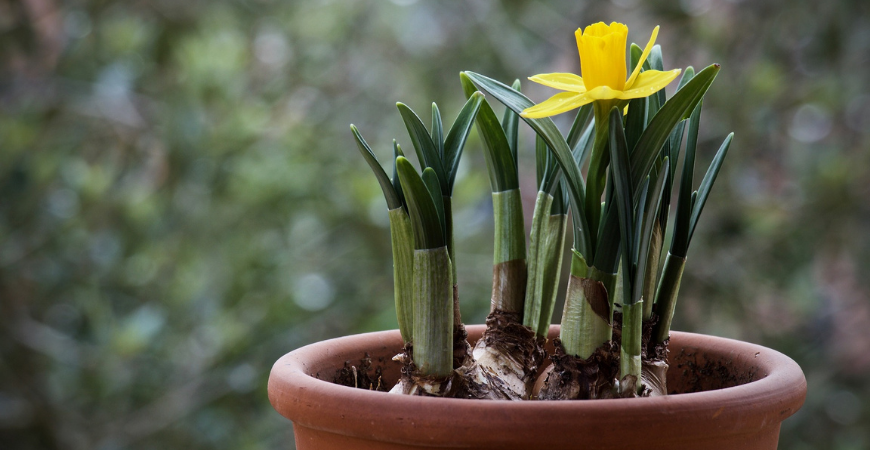
Number of weeks to bloom by plant species
No-chill varieties:
- Amaryllis blooms appear 6 to 8 weeks after potting
- Paperwhites bloom 3 to 5 weeks after potting
Varieties that require chilling:
- Tulips bloom in 2 to 3 weeks
- Crocus 2 weeks to flower
- Hyacinths bloom in 2 to 3 weeks
- Daffodils (Narcissus) bloom in 2 to 3 weeks
- Glory-of-the-snow bloom in 2 to 3 weeks
- Common snowdrop 2 weeks to flowering
- Grape hyacinth flower in 2 to 3 weeks
- Scilla bloom in 2 to 3 weeks
What do I do with forced bulbs after they have finished blooming?
Most people throw away faded bulbs, but if you’re up for the challenge, you can encourage them to bloom again. The best bulb candidates are smaller bulbs that easily reproduce and naturalize in the garden.
Grape hyacinth, daffodil, crocus, snowdrops, and scilla are good choices. Tulips can be difficult rebloomers.
Here’s how to revive previously forced bulbs in the garden
Prune any dead blooms. Set the pot in a sunny indoor spot or outdoors in a sunny sheltered location, away from chilly breezes.
Continue to water the plant and add a little fertilizer. In a month or two, the leaves will start to yellow.
Cease watering when the foliage withers and dies. Set the container in a cool, sheltered location. A basement, garage, or outdoor shed works well. Or, gently remove the bulbs from the pot, trim dead leaves, and place bulbs in a mesh or paper bag with a little vermiculite or dry coconut fiber.
In the fall, plant flower bulbs in the garden. Add a little rock phosphorous or commercial bulb fertilizer to the planting hole. Keep in mind it may be a few years until the bulb builds up enough energy to bloom again.
Note: Any forced bulbs grown in water cannot be revived. Toss them in the compost bin.
Did you know? Amaryllis is one of the easiest flowering plants to grow. Plant the bulb pointed end up in quality potting soil and water routinely. Add a support stake to the pot to help keep blooms upright and set the container in bright, indirect light. Most types of amaryllis will bloom in six to eight weeks.

